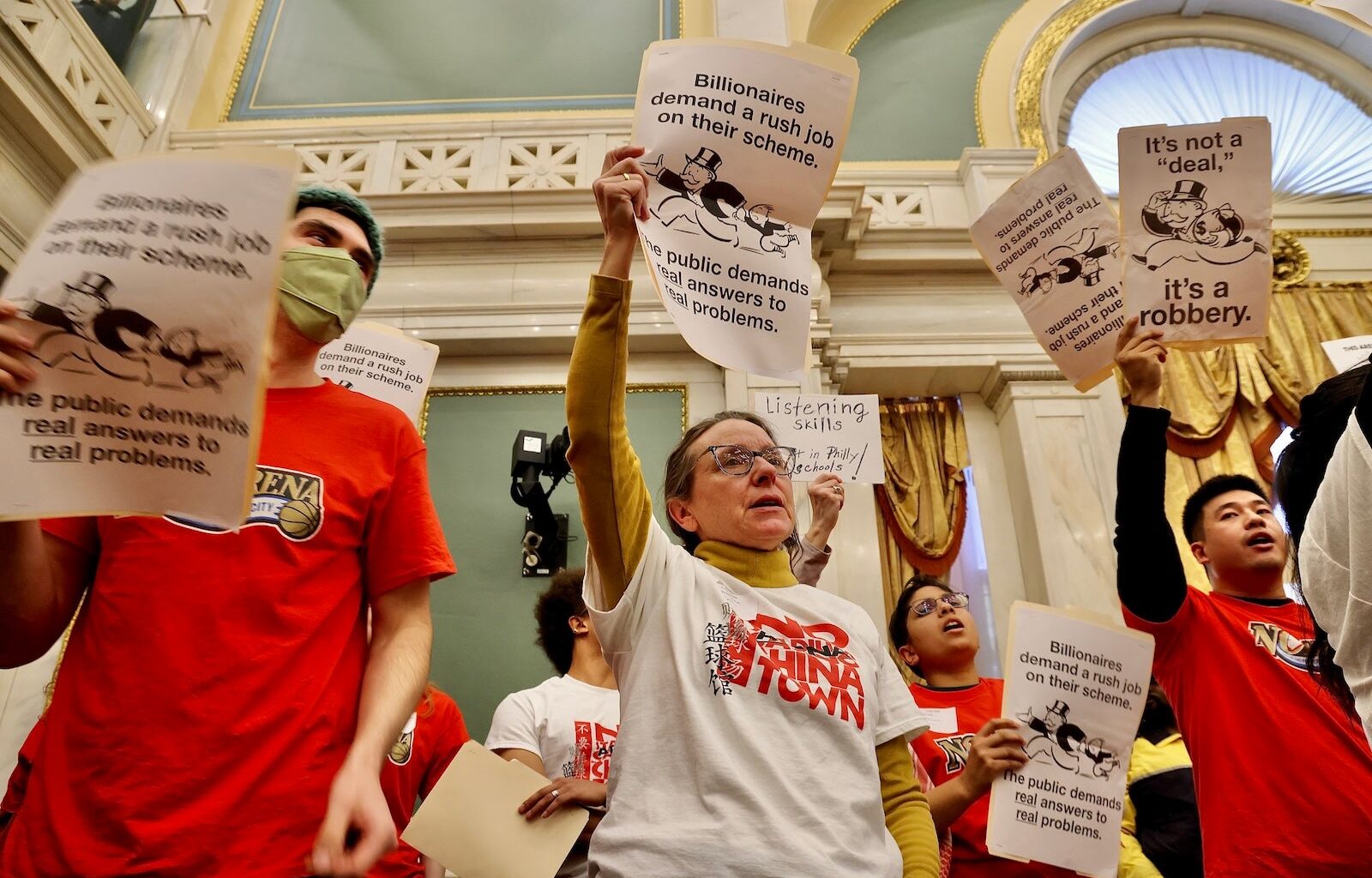Thursday’s vote puts the Sixers on track to open the arena for the 2031-2032 season, when the team’s lease ends at the Wells Fargo Center in South Philadelphia.
The Sixers want to build the arena because they want a home of their own. For decades, the team has shared the Wells Fargo Center with the Flyers, an arrangement the team argues creates a scheduling headache while limiting the team’s ability to stay competitive in the NBA.
The Sixers also contend that a downtown arena would be an economic engine for Market East, a disjointed stretch that has struggled to thrive despite millions of dollars in investment. They say the arena would help change those fortunes by encouraging real estate developers to invest in the area, home to stretches with storefronts that are half-empty.
“We appreciate City Council advancing these bills. This is an important next step in building 76 Place. We are reviewing the amendments that were added today to ensure they align with our understanding of our agreement with the City,” said a team spokesperson in a statement.
Parker, and the city’s powerful building trades, have echoed the Sixers’ arguments while promoting the arena. Supporters have also touted the team’s claims that the arena will create hundreds of jobs and generate millions in new tax revenue for the city and its school district.
“We can’t be NIMBYs — not in my backyard people. You don’t get growth that way. You get growth by being bold. And the future always benefits those that are bold,” said Ryan Boyer, business manager for the Philadelphia Building and Construction Trades Council, during a public hearing last month.
The council, an umbrella group representing about 30,000 union workers, has strong political ties to Parker.
If approved, the arena would be built on top of SEPTA’s Jefferson Station, taking over one-third of the existing Fashion District mall. The Sixers expect that 40% of fans will take public transportation to games, including the Regional Rail lines that stop at the busy station.
It remains unclear how the cash-strapped authority might fund additional trains to accommodate fans after games and events.
The 18,500-seat facility would sit steps from Chinatown, where many residents and business owners fear the arena will dismantle the 150-year-old neighborhood. They say the arena will create the kind of traffic congestion that will deter people from coming to the area, hurting hundreds of small businesses in the process.
Critics have also raised concerns about the development catalyzing gentrification and displacement.
John Chin, executive director of the Philadelphia Chinatown Development Corporation, told lawmakers last month that neither the enabling legislation nor the city’s broader deal with the Sixers contained nearly enough safeguards for the neighborhood, the only community of color in Center City.
“It’s barely a mitigation plan,” said Chin, who backed the push for a $300 million CBA.
Residents in nearby Washington Square West, the second-closest neighborhood to the arena site, also strongly oppose the arena. Civic leaders are concerned the arena would negatively impact small businesses and make the Gayborhood feel less welcoming to the city’s LGBTQ community.
After City Council’s regular meeting on Thursday, Johnson told reporters it would have been “foolish” for City Council to block a billion-dollar investment in Market East.
While contentious, Johnson insisted the legislative process had yielded a deal shaped by compromise and understanding.
“No deal is ever going to be perfect. But I do know for a fact we listened to individuals’ issues and concerns,” said Johnson.
